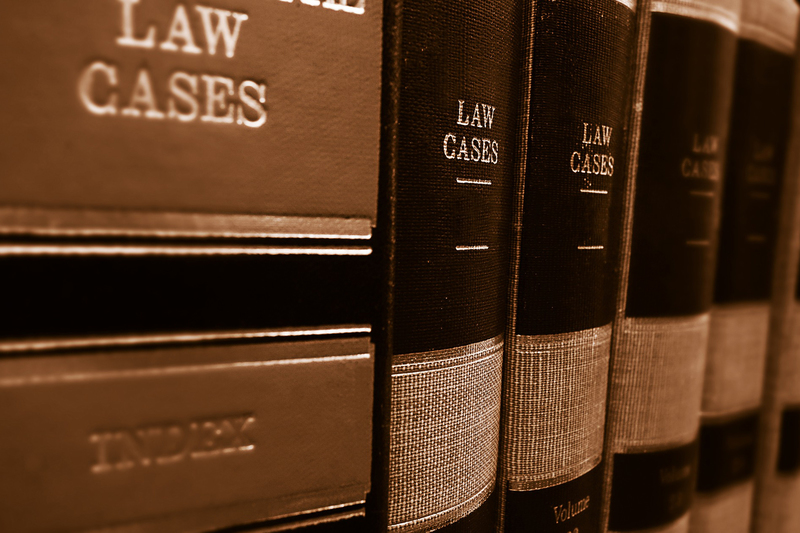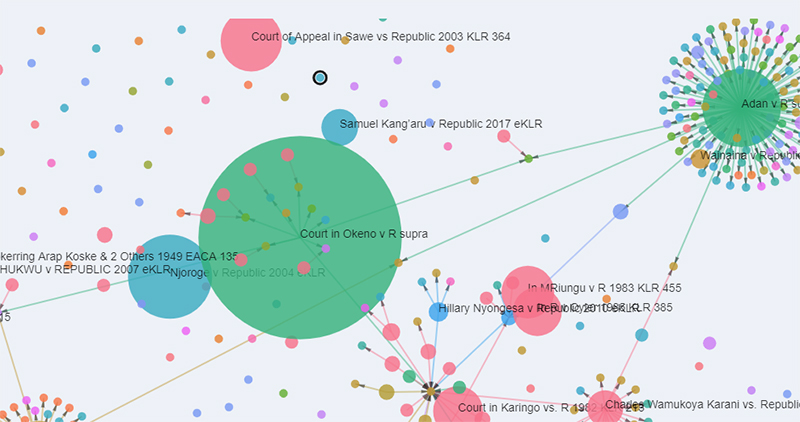Online platform to transform African legal research
24 May 2019 | Story Ambre Nicolson. Photo witwiccan, Pixabay. Read time 7 min.
This Africa Month, the African Legal Information Institute (AfricanLII) and the Democratic Governance and Rights Unit (DGRU) at the University of Cape Town (UCT) have launched Africa’s first graphical citator for African case law.
The new legal research platform is the work of technology lawyer Mariya Badeva-Bright and data scientist Neil du Toit. They explain how the project combines law and technology, and why it matters for lawyers working in Africa today.
Enhancing the quality of justice in Africa
The online research platform searches case law across 14 African jurisdictions and 250 000 cases, offering a machine learning generated summary and a graphical representation of the links between judgements.
According to Vanja Karth, director of the DGRU at UCT, the citator has the potential to enhance the quality of justice in Africa. “The DGRU’s African Case Law Citator, the first graphical citator for African case law in the world, is an extraordinary tool that will change the way that African judges, lawyers and academics can conduct research,” she explains.
“African judiciaries are seriously under-resourced, and one of the core aims of the DGRU is to provide resources to judges in Africa. This citator is a cutting-edge development that responds to that goal.”
What is a case law citator?
As du Toit explains it, case law is connected by references between judgments, in the same way that academic articles may cite each other. However, the significance of these citations is greater with case law due to the principle of stare decisis, or precedent.
“The case law citator is able to automatically find these connections between judgments and can display these connections in an innovative visual way.”
Courts are legally required to follow the decisions of other courts that are equal to them or higher up in the court hierarchy, if those decisions are applicable to the case in front of them. This means that being able to track when a court has relied on an earlier decision is of vital importance when building legal arguments.
“The case law citator is able to automatically find these connections between judgments and can display these connections in an innovative visual way,” he explains.
“Furthermore, because we have partnered with legal information institutes across the continent, we are able to track when courts in one country have cited decisions in a different country. This is crucial for performing comparative research into how legal principles have been developed across the continent, and will ultimately contribute towards the development of Africa's case law.”
Du Toit, who is currently working as a data scientist at AfricanLII, has always had an interest in both mathematics and law.

“My plan initially was to practice patent law, which combines these two areas, but I decided that legal practice was not for me after an internship. This project was Mariya’s genius. I was looking to move into the legal technology space and was fortunate to be given an opportunity to work on it.”
Access to information
Badeva-Bright is a technology lawyer who has been actively engaged in the promotion of free access to law in Africa since 2004. In 2010, she co-founded AfricanLII.
“We started with a collection of 500 judgments from two countries; today we host over 300 000 documents from 14 African countries. All freely available in countries that – until recently – were not serviced even by commercial publishers.”
The next logical step was for Badeva-Bright to find ways to enhance access to this material by creating new search tools.
“This makes it easier to locate relevant information in the now massive collection of documents and it offers additional value to researchers in the form of previously ‘hidden’ information on linkages between cases and precedents,” she explains.
“The UCT Faculty of Law is investing in the growth of talent, skills and ideas that will see us encouraging the development of the future African lawyer that is tech savvy, innovative in her use of technology-assisted legal and academic research, but also growing into the role of an innovator of justice in Africa.”
Research on the legal information institutes conducted recently by mySociety has found that 20% of respondents working in legal research across African legal information institutes (LIIs) say they cannot do their jobs without the LIIs, and over 60% of users say their jobs would be much more difficult to do without the LII in their country.
“The African Case Law Citator allows countries in Africa, who have struggled to find the funds to produce and maintain regular law reporting, to leapfrog into a digital product that offers value at a fraction of the cost. This was made possible with the innovative application of algorithms and machine learning.”
Badeva-Bright believes that the citator proves that Africans can contribute substantially and on a global scale to the development of legal technology.
“It also shows that the UCT Faculty of Law is investing in the growth of talent, skills and ideas that will see us encouraging the development of the future African lawyer that is tech savvy, innovative in her use of technology-assisted legal and academic research, but also growing into the role of an innovator of justice in Africa,” she adds.
Access the beta version of the African Case Law Citator.
 This work is licensed under a Creative Commons Attribution-NoDerivatives 4.0 International License.
This work is licensed under a Creative Commons Attribution-NoDerivatives 4.0 International License.
Please view the republishing articles page for more information.
Research & innovation





































